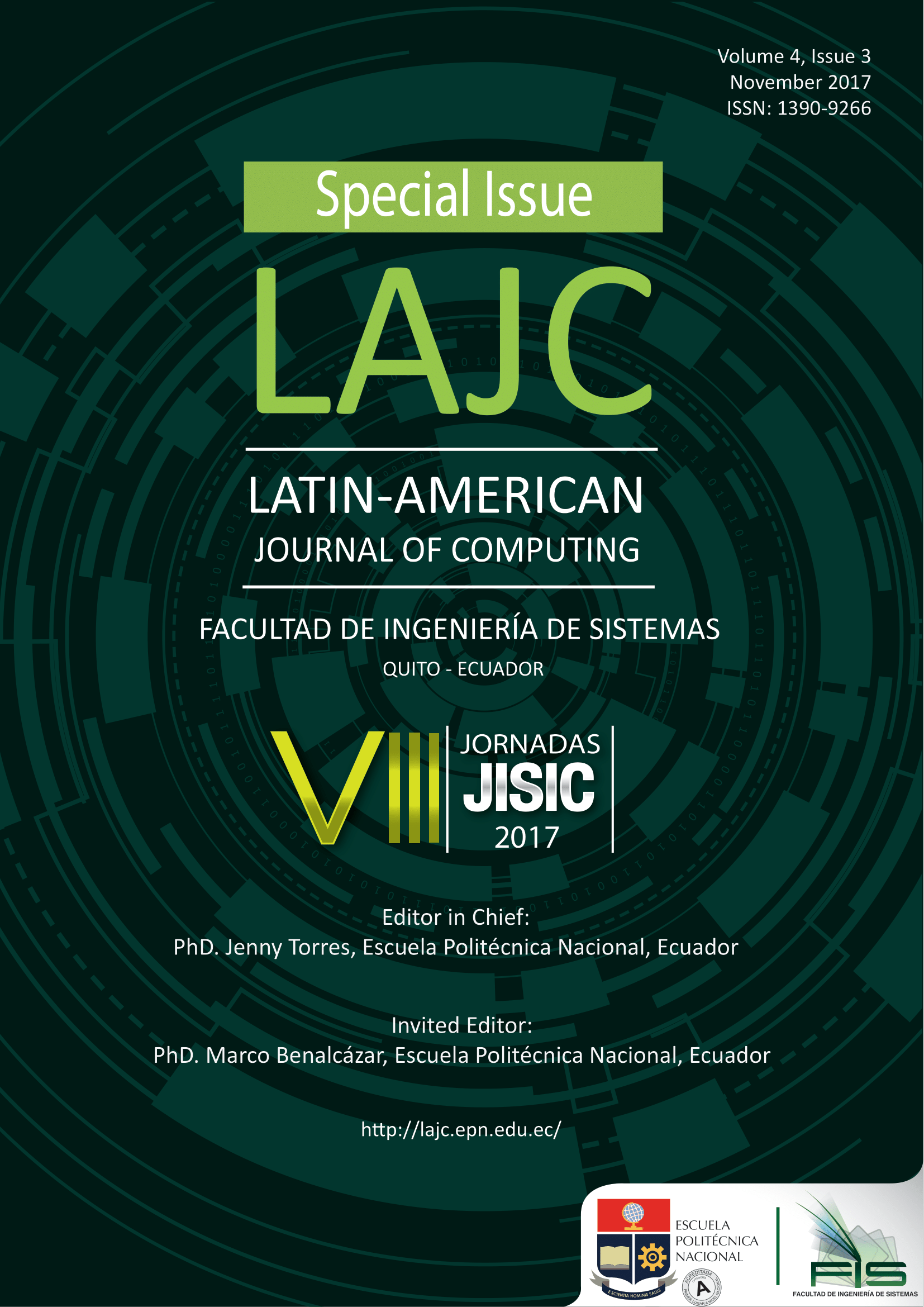Vibratory Neurostimulator for Patients with Essential Tremor
Keywords:
Essential tremor, neuroprosthesis, Pacini corpuscles, upper extremities, vibratory actuators.Abstract
The present research shows a prototype that seeks the suppression of essential tremor in a neuroprosthesis that emits vibrations to saturate the channels of communication of this pathology, initially presents a general concept of the disease, and the treatments that seek to correct this symptom known as tremor. It was essential to follow the general outlines of the design and development of the device, and subsequently the results obtained and conclusions that validate the hypotheses raised, the authors propose a series of works that validate the system and the hypotheses itself.
Downloads
References
U. Bonuccelli, “Essential tremor is a neurodegenerative disease,” J. Neural Transm., vol. 119, no. 11, pp. 1383-7; discussion 1373, Nov. 2012.
E. D. Louis, “Essential tremor.,” Lancet Neurol., vol. 4, no. 2, pp. 100-10, Feb. 2005.
G. Deuschl, P. Bain, and M. Brin, “Consensus statement of the Movement Disorder Society on Tremor. Ad Hoc Scientific Committee.” Mov. Disord., vol. 13 Suppl 3, pp. 2-23, Jan. 1998.
E. D. Louis and M. S. Okun, “It is time to remove the 'benign' from the essential tremorlabel.,” Parkinsonism Relat. Disord., vol. 17, no. 7, pp. 516-20, Aug. 2011.
K. L. Busenbark, J. Nash, S. Nash, J. P. Hubble, and W. C. Koller, “Is essential tremor benign?”, Neurology, vol. 41, no. 12, pp. 1982-3, Dec. 1991.
Elble, Rodger J., and WilliamC. Koller. Tremor. Johns Hopkins University Press, 1990.
S. E. Hua, F. a Lenz, T. a Zirh, S. G. Reich, and P. M. Dougherty, “Thalamic neuronal activity correlated with essential tremor.” J. Neurol. Neurosurg. Psychiatry, vol. 64, no. 2, pp. 273-6, Feb. 1998.
S.S. Jain y S.C. Kirshblum. Movement disorders, including tremors. In A. Joel y J.B. DeLisa, editors, Rehabilitation Medicine: Principles and practice, volume 2. Lippincott Company: Philadelphis, 1993.
G. Cooper y R. Rodnitzky. The many forms of tremor. Precise classification guides selection of therapy. Postgraduate Medicine online, July 2000.
R.J. Elble. Essential tremor frequency decreases with time. Neurology, 2000.
Marsden CD, Origins of normal and pathologic tremor. En: Findley LJ, Capildeo R (Eds). (1984). Movement Disorders: Tremor. New York: Oxford University Press, pp 37-84. En: Fahn S, Jankovic J (Eds). (2007).
J. Benito-León and E. D. Louis, “Essential tremor: emerging views of a common disorder.,” Nat. Clin. Pract.Neurol., vol. 2, no. 12, Dec. 2006.
Kotovsky J and Rosen MJ. A wearable tremor suppression orthosis, J Rehab Res Develop, 1998.
E. Kandel, J. Schwartz, and T. Jessell, Principles of Neural Science. 2000.
CURIE, Jacques; CURIE, Pierre. Développement, par pression, de ‘électricité polaire dans les cristaux hémièdres à faces inclinées. Comptes Rendus, 1880, vol. 91, p. 294-295.
E. Rocon, J. M. Belda-Lois, A. F. Ruiz, M. Manto, J. C. Moreno, and J. L. Pons, _Design and validation of a rehabilitation robotic exoskeleton for tremor assessment and suppression, _ IEEE Trans. Neural Syst. Rehabil. Eng., vol. 15, no. 3, pp. 367_378, Sep. 2007.
A. R. Gibson, K. M. Horn, and M. Pong, _Inhibitory control of olivary discharge. Ann. N. Y. Acad. Sci., vol. 978, pp. 219_31,Dec. 2002.
J. Benito-León, “Essential tremor: one of the most common neurodegenerative diseases?,” Neuroepidemiology, vol. 36, no. 2, pp. 77–8, Jan. 2011.
K. E. Zeuner and G. Deuschl, An update on tremors.,Curr. Opin. Neurol., vol.25, no. 4, pp. 47582, Aug. 2012.
P. Geborek, H. Jörntell, and F. Bengtsson, Stimulation within the cuneatenucleus suppresses synaptic activation of climbing bers.,Front. Neural Circuits, vol. 6, no. January, p. 120, Jan. 2012.
R. Fuentes, P. Petersson, and M. A. L. Nicolelis, Restoration of locomotive function in Parkinson's disease by spinal cord stimulation: mechanistic approach., Eur. J. Neurosci., vol. 32, no. 7, pp. 11008, Oct. 2010.
Downloads
Published
Issue
Section
License
Copyright Notice
Authors who publish this journal agree to the following terms:
- Authors retain copyright and grant the journal right of first publication with the work simultaneously licensed under a Creative Commons Attribution-Non-Commercial-Share-Alike 4.0 International 4.0 that allows others to share the work with an acknowledgement of the work's authorship and initial publication in this journal.
- Authors are able to enter into separate, additional contractual arrangements for the non-exclusive distribution of the journal's published version of the work (e.g., post it to an institutional repository or publish it in a book), with an acknowledgement of its initial publication in this journal.
- Authors are permitted and encouraged to post their work online (e.g., in institutional repositories or on their website) prior to and during the submission process, as it can lead to productive exchanges, as well as earlier and greater citation of published work.
Disclaimer
LAJC in no event shall be liable for any direct, indirect, incidental, punitive, or consequential copyright infringement claims related to articles that have been submitted for evaluation, or published in any issue of this journal. Find out more in our Disclaimer Notice.










